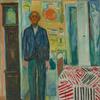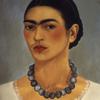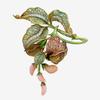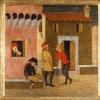Burt Hasen, "Allegories" & "Artistic Friendships"
- NEW YORK, New York
- /
- October 24, 2017
ANITA SHAPOLSKY GALLERY
152 EAST 65TH STREET ● NEW YORK, NY 10065 ● 212.452.1094 ● FAX: 212.452.1096
Opening Reception: Tuesday, November 7th 6 - 8pm
GALLERY 1
BURT HASEN, “ALLEGORIES”
GALLERY 2
Artists Friends (2nd GENERATION ABSTRACT EXPRESSIONISTS)
November 7, 2017– February 3, 2018
Gallery 1:
Burt Hasen (1921-2007) was born in New York City and trained in Paris. When he returned to New York Hasen was an active member of the 10th Street Scene, which played a significant part in the growth of American art and in the diversification of styles that are evident in the art world of today. Hasen, a founding member of the March Gallery, like many of his contemporaries, is still under known.
A long time professor at the School of Visual Arts, his work is also included in many major collections among them the Smithsonian Institution, the Library of Congress, the National Academy of Design and the British Museum.
Throughout his career Burt Hasen, a fantastical surrealist extraordinaire, was primarily concerned with understanding the convergence of the internal and external space that occurs haphazardly in the human psyche. His works are packed with symbols, referential allusions and invented hieroglyphs. Despite the specificity of their visual and textual signifiers the resultant imagery lacks any literal identity.
The portraits of woman are a precursor to the works of artists like Cindy Sherman and Lisa Yuskavage. His imagery alludes both to art’s history and the present. His women are distinctly fierce. Hasen’s paints his women in strange indoor settings or dreamy outdoor environments. These works are surreal deviations on the archaic genre of the Lady-in-Waiting portraits. These paintings are about the sitters’ states of mind and psyche. Hasen uses the European Lady-in-Waiting motif with regard to the pictorial composition but his women are not passive objects of beauty.
Burt Hasen’s work teeters between magical realism and surrealism. Thematically there is a fantastical element throughout his work. This is more mysterious and alluring than dark and menacing.
His etchings are populated by figures in varying states of metamorphosis; transitioning from human to animal, singularities to pluralities, background to foreground, inanimate to animate.
Yet, His aerial maps use the line as a precursor to abstract art.
Gallery 2:
Seymour Boardman started with a basic structure and as the work evolved he went through the process of simplification, eliminating unnecessary elements, but maintaining the essence of the image. He often painted the edge of the canvas. His paintings are subjects for contemplation.
Lawrence Caclagno’s style ranges from meditative linear abstract landscapes to free-form Abstract Expressionism. His colors resonate the ambiance of his northern California.
Herman Cherry painted deceptively simple abstractions. He was a fine colorist and a poet.
Michael Loew’s work was primarily inspired by landscape, his approach was more painterly and expressive. His application of color remained loose, capturing the harmonious, luminous effects of light and space.
Richards Ruben’s “Venetian Fragments” breaks the dictates of the flat two-dimensional work and reminds us that he is mainly a gestural artist, who shapes and curves his canvases. This reflects his interest in having the inner rhythms of the image correspond with the outer image of the canvas as well as interaction with the wall.
Irving Petlin introduced a new language of abstract landscapes. White flares of dragged brush strokes lift and lighten the atmosphere and invite to share a magical momentum.
John Hultberg’s dramatic landscapes develop with a prophetic and apocalyptic atmosphere, environmental damage, pieces of debris and dirt screams through the piles of organized brushstrokes. He was known as the painter of the in-between. He was a close friend of Burt Hasen.
For more information, please contact Anita Shapolsky Gallery: Catalogue available (also on website)
www.anitashapolskygallery.com | anitashapolsky@gmail.com
Tel: 212-452-1094
Gallery Hours: Tuesday – Friday 11-6 and by appointment.
ANITA SHAPOLSKY ART FOUNDATION ● 20 WEST BROADWAY ● JIM THORPE, PA 18229 ● 570.325.5815
NY: 212.452.1094 ● FAX: 212.452.1096 ● www.asartfoundation.org
Contact:
Anita ShapolskyAnita Shapolsky Gallery
212 452 1094
anitashapolsky@gmail.com
152 E 65th Street (patio entrance)
New York, New York













100x100_c.jpg)

